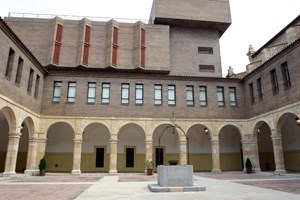
The Tarragona Provincial Historical Archive (AHT) has its origins during the period of the Second Republic with the Decree, of 12 November 1931, establishing the Provincial Historical Archives. The intention of the Republican government was that these centres would only hold historical notarial documentation, but the initiative was halted by the outbreak of the Spanish Civil War in 1936. On 21 January 1939 the new regime again legislated in this direction with a Decree establishing Historical Protocol Archives. In 1944 the Tarragona Provincial Historical Archive was definitively established to accept the protocols from the various notarial districts in the province of Tarragona, to which was added the documentation held by the Tarragona Municipal Historical Archive up to the year 1799.
In 1981, as a consequence of the transfer of powers from the State to the Generalitat de Catalunya, the Catalan Government Ministry of Culture assumed responsibility for the administration of this archive, as well as that of the provincial historical archives of Girona and Tarragona. Furthermore, as established by Law 10/2001, of 13 July, on archives and documents, the Archive came to form part of the Generalitat de Catalunya's Network of District Archives and also became the Archive of the Tarragona District.
At the present time the AHT has 183 documentary archives, including the collections. To a large extent they come from peripheral State administrations. Outstanding amongst them are the archives of the Civil Government, which includes a large number of associations throughout the municipalities of Tarragona (1849-1982); the Provincial Delegation of the Treasury, of considerable volume; and the Territorial Land Registry Administration, which has an interesting collection of maps showing the distribution of plots of land in the countryside for 130 municipalities between 1927-1960.
The Archive has a capacity of 5,400 lineal metres of shelving over seven floors of documentary archive, with an additional 1,900 lineal metres of auxiliary storage space.